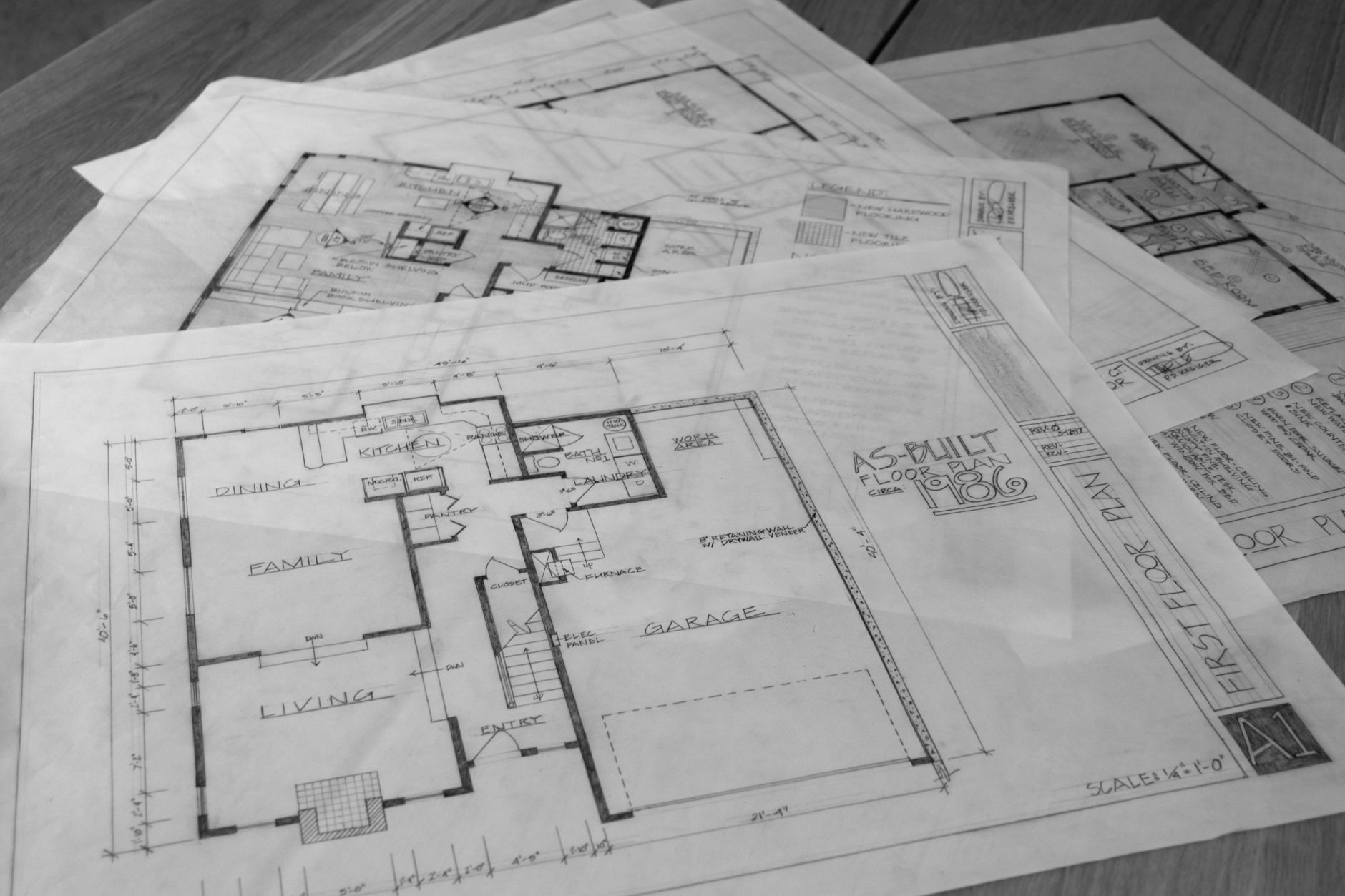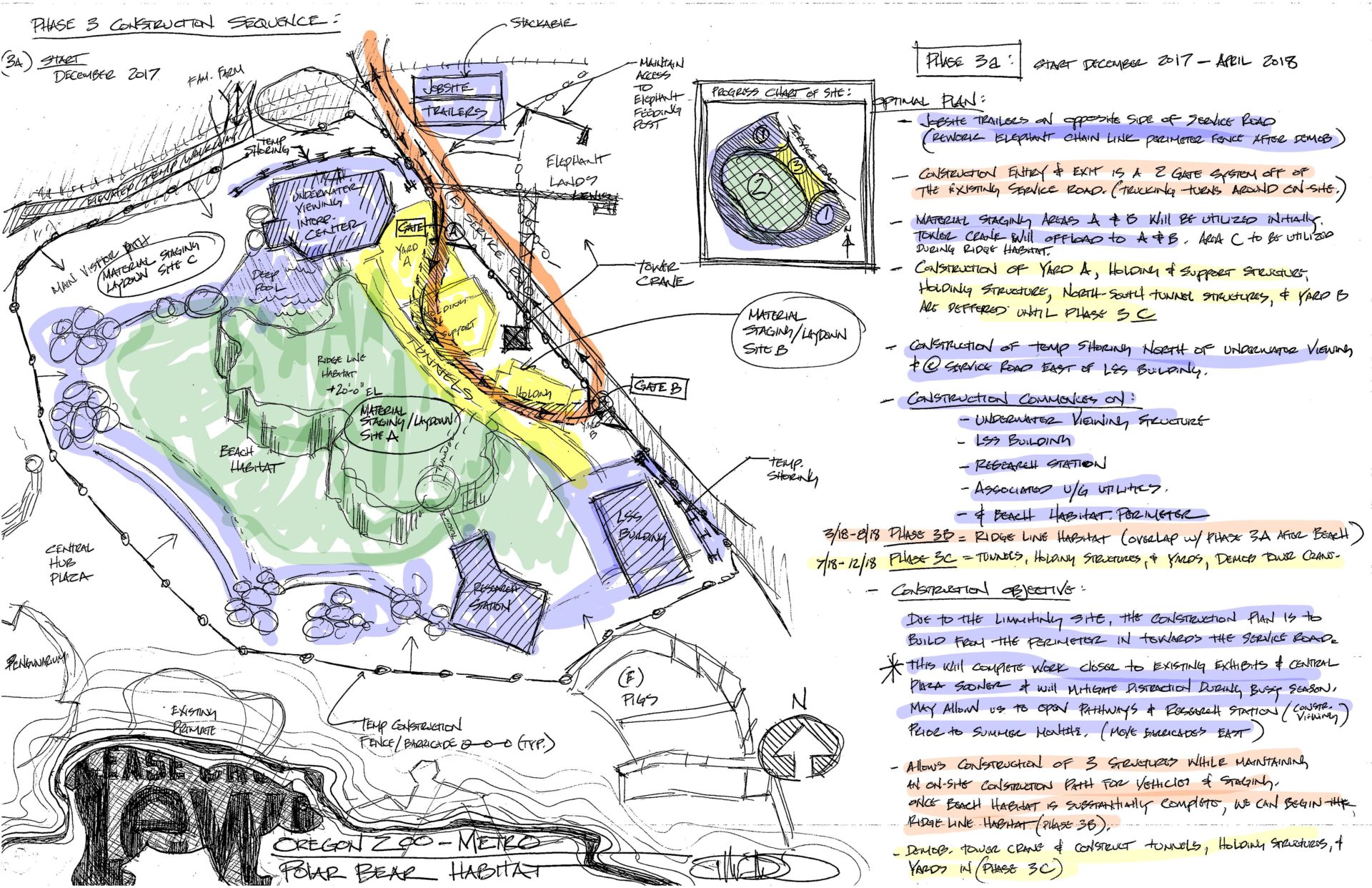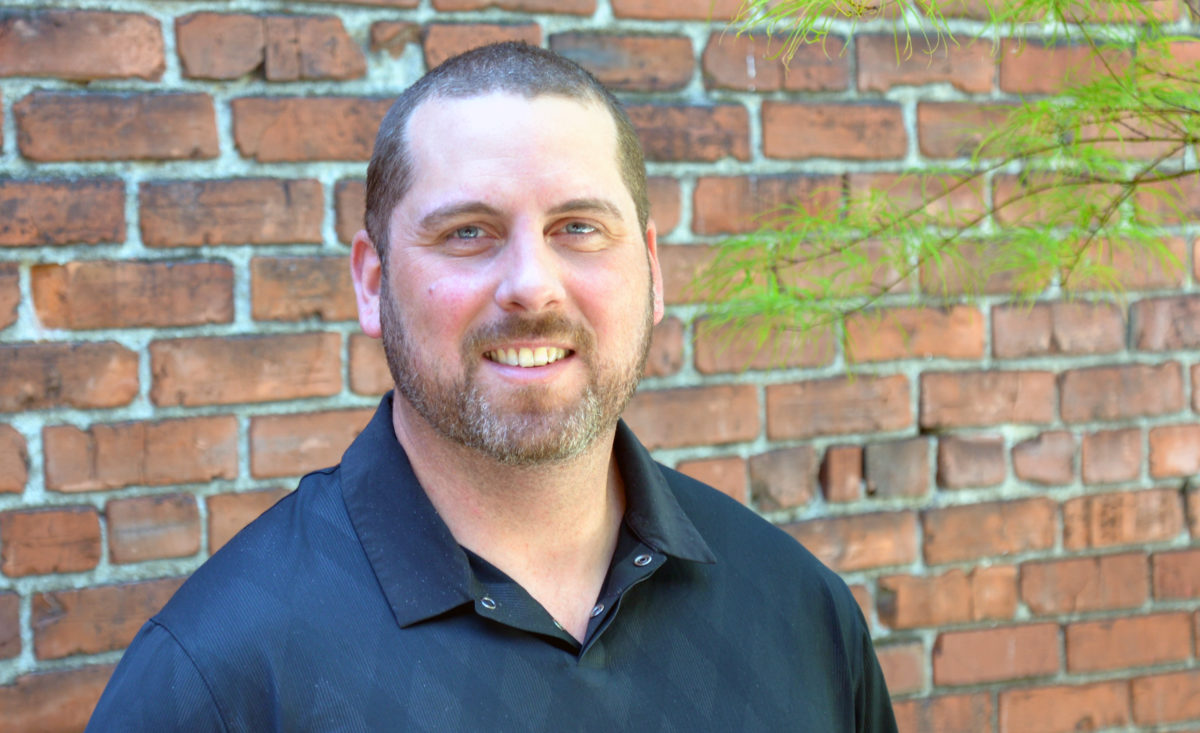If Phil won the lottery, he would spend his free time designing and building everything from his dream house to custom furniture. As a superintendent, he gets to fulfill his passion for building every day on the job.
With a background in art, Phil brings a unique skill set to every job, visually communicating constructability items through sketches, a fun and effective way to help others understand the issue at hand. Outside of work, he enjoys golfing, fishing, working on major home improvement projects, and hiking with his wife, Krista, and their dog, Molly.
BW: What originally attracted you to the construction industry?
PK: I was always really into drawing growing up and received recognition in high school in the arts, so I took a few drafting classes and loved it. It was then I decided to pursue architecture as a career ambition.
While drawing details and building sections, I realized I didn’t have a full grasp on constructability so I got a job framing houses. I was able to apply what I did at work to my architectural designs at school. As I became a better builder and technology advanced, I chose a career path that allowed me to work with my hands and decided to stick with construction. I earned my associate degree in architecture and resolved to be a carpenter for the rest of my life.
After a few years of working full time and taking a leadership role on my crew, I wanted to learn more of the estimating and management side of construction, which lead to more college and eventually to internships and large commercial projects, and here I am.

BW: You’ve been in the industry for more than a decade; any philosophies or insights to share?
PK: My insight is probably not much different from other industries, in that you need to understand what fulfills you personally and seek the opportunities that sustain that. You also have to strive to continuously learn and improve in areas that are out of your comfort zone.
The underlying reason for what led me to where I am today is a desire to have a better understanding of what I didn’t know. My love of building and creating something from raw materials to a usable structure that lasts for a lifetime is motivating for me.
BW: What’s the best advice you have ever received?
PK: Quite simply, just to be a man of your word and follow through. That means a few things to me, but most importantly is that if you say you will do something you need to follow up and do it, no matter what. It also means that you need to say what you mean and mean what you say. The ability to communicate clearly and concisely is the most critical skill that every superintendent should possess.
BW: You’ve worked on some sensitive occupied sites in your career; how do you maintain safety amidst those particular settings?
PK: You have to put yourself in the shoes of the people who are occupying your jobsite and understand that they do not look at safety the way we—as a construction firm—do.
The Polar Passage project at the Oregon Zoo will be a very sensitive occupied site; we’ll need to be cognizant of the fact that the patrons will be preoccupied with enjoying the zoo and their attention will be elsewhere, not recognizing the fact that there is a dangerous jobsite a few feet away. It is our duty to keep the public safe in addition to our workers—it just adds a depth to our safety approach when working on an occupied site.
BW: You’re a talented artist. How do you utilize those skills in construction?
PK: As they say, “a picture is worth a thousand words.” I am a visual learner, so visual communication works best for me when I’m on the receiving end. I guess I make the assumption that communicating visually with a sketch is the best way to explain things when talking constructability, the sequence of work, etc.
It’s obviously only applicable to certain situations but since we build off of drawings, many of our communications are drawing related and the visual part of describing an issue or solution can save a lot of time. I also like to draw in perspective dimensionally to really illustrate things. Luckily my background in drafting and art allow me to do that clearly.

BW: You’ll soon be transitioning to work on the Polar Passage renovation at the Oregon Zoo; what are you most excited about for that project?
PK: I’m really excited to dive into yet another unique project that will teach me new skills. It’s not very often you get to build a habitat for a vulnerable species so I think we are creating something that is not only necessary but will also support species research and the Oregon Zoo for many years to come. It is one of those projects that will have a lasting impact. I know that I can always visit the Zoo long after the project is over and be proud that I was involved in the construction of the Polar Habitat but also the new Primate Habitat. The monkeys get new digs too!
BW: What’s your favorite thing to enjoy outside of work?
PK: I love to golf so I try to play as much as I can when I have free time. I am also in the middle of some long-term renovations in my house so I end up “working” when I’m not “working” for a lot of my free time. I enjoy creating a new space, getting into the craftsmanship, and working with my hands, even outside of work.

